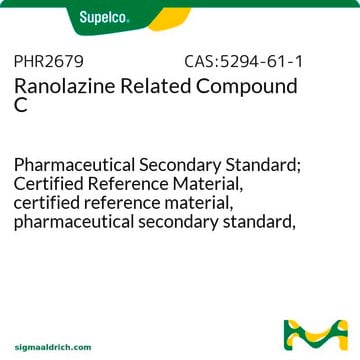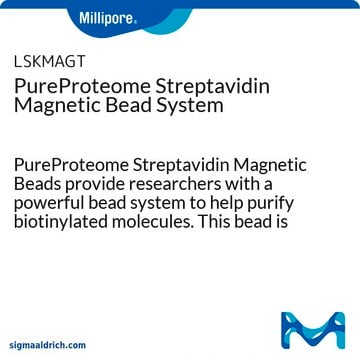17-500M
Catch and Release v2.0 Reversible Immunoprecipitation System
Sinónimos:
Catch and release system, Immunoprecipitation kit
About This Item
Productos recomendados
species reactivity (predicted by homology)
all
Quality Level
manufacturer/tradename
Catch And Release
Upstate®
technique(s)
activity assay: suitable (IP-kinase)
immunoprecipitation (IP): suitable
western blot: suitable
shipped in
wet ice
General description
Reproducible: eliminates aspiration steps that typically lead to diminished/lost sample
Convenient: spin-column format dramatically simplifies sample handling
Reversible: simple elution of antigen:antibody complex in either native or denatured form
Use:
This kit allows for quick and reproducible immunoprecipitation (IP) by using a spin column. The system is more reproducible than regular IP′s, which are problematic with regards to washing the protein A/G agarose without disrupting the agarose bed. The binding of the antibody/antigen complex in Catch and Release is reversible, and elution of the immune complex can occur with native or denaturing buffers. The system has been tested successfully with rabbit, mouse, sheep and goat antibodies. IP using human IgG1-4 should be suitable. IP using chicken antibodies or human IgA, IgD, IgE or IgM is not recommended with this kit. Please read the enclosed product manual before use.
Application
Packaging
Components
Catch and Release Non-denaturing Elution Buffer, 4X (Cat.# 20-209)
Catch and Release Denaturing Elution Buffer, 1X (Cat.# 20-284)
20-285
20-216
Catch and Release Capture Tubes
Quality
Storage and Stability
Legal Information
signalword
Danger
hcodes
Hazard Classifications
Aquatic Acute 1 - Aquatic Chronic 1 - Eye Dam. 1 - Repr. 1B - Skin Corr. 1C
Storage Class
6.1C - Combustible acute toxic Cat.3 / toxic compounds or compounds which causing chronic effects
Certificados de análisis (COA)
Busque Certificados de análisis (COA) introduciendo el número de lote del producto. Los números de lote se encuentran en la etiqueta del producto después de las palabras «Lot» o «Batch»
¿Ya tiene este producto?
Encuentre la documentación para los productos que ha comprado recientemente en la Biblioteca de documentos.
Nuestro equipo de científicos tiene experiencia en todas las áreas de investigación: Ciencias de la vida, Ciencia de los materiales, Síntesis química, Cromatografía, Analítica y muchas otras.
Póngase en contacto con el Servicio técnico










